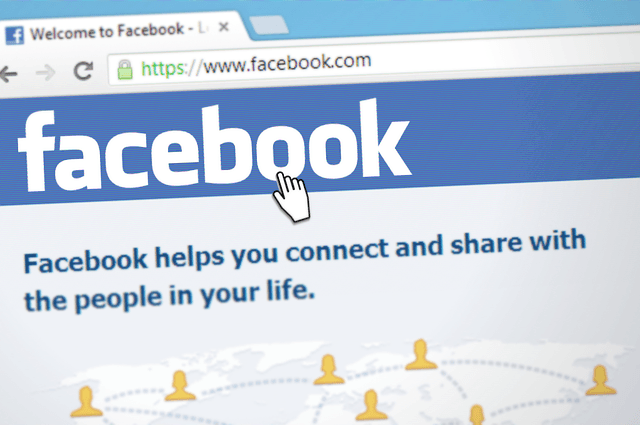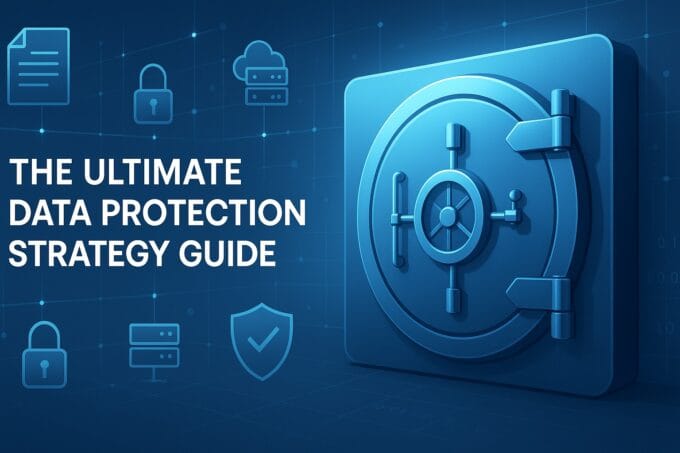If you’re not paying for the product, you are the product.” This famous quote has never been more relevant. In an era where scrolling is second nature, your personal information is being tracked—from your likes and shares to your voice and face. Social media platforms promise connection, but what’s the price of convenience? The truth is, the level of social media privacy invasion is far more extensive than most of us realize. It goes way beyond just your profile picture and witty status updates. These companies collect a staggering amount of data, creating incredibly detailed profiles of our lives, habits, and even our deepest desires. This isn’t just about targeted ads; it’s about understanding the complex web of social media data collection that shapes our online experience and, increasingly, our real-world interactions. In this article, I want to pull back the curtain and show you what data these platforms truly know about you, why they collect it, and most importantly, how you can start taking back control of your digital life.
Table of Contents
Key Insights
- This extensive social media data collection is primarily used for targeted advertising, product improvement, and user behavior analysis, often leading to a feeling of social media privacy invasion.
- You can significantly reduce your exposure by regularly reviewing and adjusting your social media privacy settings, limiting ad tracking, and being mindful of what you share online.
- Social media platforms collect a vast array of data, including what you post, who you interact with, your location, device information, and even data from other websites you visit.
- Platforms like Facebook and Instagram track users both on and off their apps using tools like cookies and pixels, contributing to a comprehensive digital footprint.
- The misuse of this personal data can lead to risks such as identity theft, targeted scams, and even discrimination, highlighting the need for vigilance.
What Data Do Social Media Platforms Really Collect?
When I first started using social media, I thought I was just sharing updates with friends. I quickly learned that the reality is far more complex. The amount of data these platforms gather about us is truly mind-boggling. It’s not just the obvious stuff; it’s the subtle, inferred, and even third-party data that paints a complete picture of who you are. Let’s break down the different types of data that contribute to this extensive social media data collection.
Directly Provided Data
This is the most obvious category. It’s all the information you willingly give to the platform when you sign up and use it.
- Profile Information: Your name, email address, phone number, date of birth, gender, relationship status, education, work history.
- Content You Share: Every post, comment, photo, video, story, and message you send. This includes the text, images, and even the metadata associated with them (like when and where a photo was taken).
- Interactions: Your likes, reactions, shares, saves, and who you follow or are friends with. This tells them about your interests and social network.
- Purchases & Payment Info: If you buy something through the platform or use their payment services, they collect your payment details and transaction history.
- Communications with Them: Any messages you send to customer service or feedback you provide.
Automatically Collected Data
This is where things get a bit more technical and often less obvious. These platforms gather data about how you use their services, your devices, and your location, even when you’re not actively typing something. This is a key part of how apps track users online.
- Usage Data:
- How long you spend on the app: Not just total time, but time spent on specific posts, videos, or profiles.
- Features you use: Which buttons you click, which settings you change.
- Search history: What you look for on the platform.
- Interaction patterns: How often you log in, what time of day, and your scrolling speed.
- Device Information:
- Device type: Is it an iPhone, Android, tablet, or desktop?
- Operating system: iOS, Android, Windows, macOS, etc.
- Browser type: Chrome, Safari, Firefox.
- IP address: This can indicate your general location.
- Battery level, signal strength, app versions.
- Unique device identifiers: These help them recognize your device across different apps and websites.
- Location Data:
- GPS: If you’ve given permission, they can track your precise location.
- IP address: Provides a general geographical area.
- Wi-Fi and Bluetooth information: Can provide more precise location data, even indoors.
- Check-ins: Locations you manually tag in your posts.
Inferred Data
This is perhaps the most fascinating and often unsettling category. Platforms use algorithms and artificial intelligence to make educated guesses about you based on all the other data they’ve collected. This is how they build a detailed profile that goes beyond what you explicitly tell them.
- Interests: If you frequently like posts about cooking, travel, or specific hobbies, they’ll infer those as your interests.
- Demographics: Your age, gender, income level, relationship status, and even political leanings can be inferred based on your activity, friends, and the groups you join.
- Behaviors: Are you a frequent online shopper? A news junkie? A fitness enthusiast? They infer these behavioral patterns.
- Personality Traits: Algorithms can even attempt to deduce aspects of your personality based on your language use, emoji choices, and interaction styles.
Third-Party Data
It’s not just data you provide or data they collect directly. Social media platforms also get data about you from other sources. This is a significant aspect of personal data misuse if not handled carefully.
- Data Brokers: These companies specialize in collecting and selling personal information. Social media platforms might buy data from them to enrich their profiles of users.
- Websites and Apps: Many websites and apps use social media “plugins” (like the Facebook “Like” button or Instagram embeds). Even if you don’t click them, these can send data back to the social media company about your activity on that site.
- Advertisers: If you click on an ad on a social media platform and then make a purchase on the advertiser’s website, the advertiser might share information back with the social media platform to confirm the conversion.
- Linked Accounts: If you link your social media account to other services (like Spotify, Netflix, or dating apps), data can be shared between them.
“The digital breadcrumbs we leave behind are meticulously collected, analyzed, and used to paint an incredibly detailed picture of our lives.” 🎨
Understanding how third-party risks are assessed can provide more insight into how your data might be shared with other entities. If you’re curious about how businesses manage data shared with external partners, you might find it useful to understand the third-party risk assessment process.
The “Why”: Why Do They Collect So Much Data?
At this point, you might be thinking, “Why do they need all this information?” The answer is complex, but it largely boils down to three main reasons:
- Targeted Advertising: This is the big one. The more they know about you, the more precisely they can show you ads for products and services you’re likely to be interested in. This makes their advertising space more valuable to businesses, which is how social media companies make most of their money. It’s the core of their business model.
- Product Improvement & Personalization: They use data to understand how people use their platforms. This helps them identify popular features, fix bugs, and develop new features that keep you engaged. They also use it to personalize your feed, showing you content they think you’ll like, which keeps you coming back.
- Research & Development: Data helps them understand trends, predict user behavior, and develop new technologies, including artificial intelligence. For instance, understanding how AI impacts various roles, like a CISO, requires deep insights into data patterns and privacy implications. You can learn more about the AI impact on the CISO role in 2025.
Privacy Invasion on Specific Platforms
While the data collection practices are broadly similar across major platforms, let’s look at how privacy invasion on Instagram and Facebook data tracking specifically impact users.
Facebook Data Tracking
Facebook, now Meta, is notorious for its extensive data collection. My experience shows that they track not just what I do on Facebook, but also my activity across the internet.

- Off-Facebook Activity: This is a big one. Facebook tracks your visits to websites and apps that use Facebook tools (like the “Login with Facebook” button, Facebook Pixel, or Facebook SDK). This means even if you’re not logged into Facebook, they might still be collecting data about your browsing habits. They then link this data back to your profile.
- Facial Recognition: Historically, Facebook used facial recognition technology to identify people in photos and suggest tags. While they’ve scaled back some public features, their underlying capability to analyze faces in images remains.
- Messenger Data: Your conversations on Messenger can be analyzed for keywords, links, and shared content, which can then be used to inform your profile.
Privacy Invasion on Instagram
Instagram, also owned by Meta, shares many of Facebook’s data collection practices, but with a visual twist.
- Location Tagging: Every time you tag a location in a post or story, Instagram logs that data. Over time, this creates a detailed map of places you frequent.
- Engagement with Visual Content: Instagram analyzes which types of photos and videos you spend time viewing, liking, and commenting on. This helps them understand your visual preferences, fashion sense, and even your mood.
- Shopping Habits: With Instagram Shopping, your browsing and purchase history within the app are meticulously tracked, allowing for highly specific product recommendations.
“The line between convenience and surveillance blurs when platforms track our every digital move, both on and off their apps.”
How Apps Track Users Beyond Their Walls
This is perhaps the most surprising aspect of how apps track users online. It’s not just when you’re actively using the app; it’s also when you’re browsing other parts of the internet.
- Cookies: These small text files are placed on your device by websites you visit. Social media platforms use their own cookies to remember your login and preferences, but they also use third-party cookies placed on other websites to track your browsing habits across the web.
- Tracking Pixels: These are tiny, invisible images embedded on websites. When you visit a page with a tracking pixel, it sends information back to the social media company, telling them you visited that page. This is a common method for advertisers to measure campaign effectiveness and for platforms to build profiles of your interests.
- Software Development Kits (SDKs): These are bundles of code that app developers include in their apps to integrate social media features (like sharing to Facebook or Instagram). SDKs can also send data back to the social media platform about your activity within that third-party app.
- Cross-Device Tracking: Ever notice an ad on your phone for something you just looked up on your laptop? That’s cross-device tracking. Platforms use various identifiers (like your IP address, login information, or unique device IDs) to link your activity across all your devices, creating a unified profile.
This constant surveillance digital footprint control is a major challenge for users. It’s like leaving a trail of breadcrumbs everywhere you go online, and these platforms have sophisticated ways of collecting and connecting those crumbs.
The Risks of Personal Data Misuse
All this data collection isn’t just about showing you ads; it comes with significant risks. The misuse of personal data can have serious consequences for individuals.
- Data Breaches: Even with robust security, no system is entirely foolproof. Large databases of personal information are prime targets for hackers. If a social media platform suffers a data breach, your personal information could be exposed, leading to identity theft or financial fraud. Understanding the risks associated with such vulnerabilities is crucial. For example, learning about a specific zero-day vulnerability like CVE-2024-55591 Fortinet zero-day vulnerability can highlight how quickly your data can be at risk. Similarly, the ICBC Bank ransomware attack provides key insights into the real-world impact of such security failures.
- Targeted Scams and Phishing: With detailed profiles of your interests and activities, scammers can craft highly convincing phishing emails or fake job offers that seem incredibly legitimate. For instance, being aware of fake job offers scam can help you identify and avoid such deceptive tactics.
- Discrimination: Inferred data about your demographics, income, or health can potentially be used for discriminatory practices in areas like housing, employment, or insurance.
- Manipulation and Filter Bubbles: The algorithms that personalize your feed can also create “filter bubbles,” showing you only information that confirms your existing beliefs. This can limit your exposure to diverse viewpoints and potentially be used to manipulate public opinion.
- Erosion of Privacy: The constant feeling of being watched, even if it’s by an algorithm, can erode our sense of privacy and autonomy. We might self-censor or change our behavior online, knowing that our data is being collected.
“Your data is a goldmine, and without proper safeguards, it can become a liability.”
Taking Back Control: Managing Your Social Media Privacy Settings
While completely opting out of data collection might be impossible if you want to use social media, you can significantly reduce your exposure and regain some surveillance digital footprint control. I’ve found that regularly checking my settings and being mindful of my online actions makes a big difference.
1. Review Your Privacy Settings Regularly
Social media platforms frequently update their settings, and default options often favor data collection. Make it a habit to:
- Go through your privacy settings: Look for sections like “Privacy Checkup,” “Privacy Shortcuts,” or “Settings & Privacy.”
- Understand each option: Don’t just click “OK.” Read what each setting controls.
- Adjust sharing defaults: Decide who can see your posts, photos, and personal information. Do you really need your phone number public?
- Check “Who can look me up”: Limit how people can find your profile using your email or phone number.
2. Limit Ad Tracking and Personalization
This is crucial for reducing the amount of data used for targeted advertising.
- Opt-out of “Off-Facebook Activity”: On Facebook, you can review and clear your “Off-Facebook Activity” and disconnect future activity from your account. While it won’t stop data collection, it will de-link it from your profile.
- Manage Ad Preferences: Most platforms have an “Ad Preferences” or “Ad Settings” section where you can see the interests they’ve inferred about you and remove them. You can also often opt out of seeing ads based on your activity on other websites and apps.
- Use Browser Extensions: Privacy-focused browser extensions (like uBlock Origin, Privacy Badger, or Ghostery) can block tracking cookies and pixels on websites.
3. Control Location Services
Your location data is highly sensitive.
- App Permissions: Go into your phone’s settings (not just the app settings) and review which apps have access to your location. Set it to “While Using” or “Never” for social media apps unless absolutely necessary.
- Avoid unnecessary tagging: Think twice before tagging your precise location in every post.
4. Manage Third-Party App Permissions
When you use “Login with Facebook” or “Login with Google” on other apps or websites, you’re granting them access to some of your social media data.
- Review Connected Apps: Periodically check the “Apps and Websites” section in your social media settings. Remove any apps you no longer use or don’t recognize.
- Limit Permissions: When connecting a new app, be selective about the permissions you grant. Do they really need access to your friend list or posts?
5. Think Before You Share
This is the simplest yet most powerful step.
- Assume everything is public: Even if your settings are locked down, a screenshot can make anything public.
- Consider the long-term impact: Will this photo or comment affect me in five or ten years?
- Be wary of quizzes and polls: Many seemingly innocent quizzes are designed to extract personal information.
- Minimize personal details: The less you share, the less data there is to collect.
For a broader understanding of how to protect your digital identity, exploring resources on information security can be incredibly beneficial. Learning about understanding information security and its role in cybersecurity can empower you with knowledge to safeguard your data. Businesses also have a responsibility to protect data, and there are comprehensive guides on cybersecurity for businesses that highlight necessary measures.
Understanding Your Digital Footprint and Surveillance
Every click, every search, every like – it all contributes to your digital footprint. This footprint is the trail of data you leave behind online. Social media platforms, through their extensive data collection, are key players in shaping and understanding this footprint. This can sometimes feel like constant digital surveillance.
This isn’t just about companies; governments and other entities can also access or demand this data, especially in the context of legal proceedings or national security. The concept of digital personal data protection acts is crucial here, as these laws aim to give individuals more control over their data and regulate how companies collect, process, and store it. Understanding what these acts entail, such as what is digital personal data protection act, is becoming increasingly important for everyone.
The goal isn’t necessarily to become invisible online, but to be aware and intentional. I believe that understanding the extent of this surveillance allows us to make more informed choices about our online presence.
The Future of Social Media Privacy
As technology evolves, so do the challenges and opportunities for privacy. We’re seeing a growing global awareness about data privacy, leading to stronger regulations like GDPR in Europe and similar laws emerging elsewhere. These regulations are pushing platforms to be more transparent and give users more control.
However, the innovation in data collection techniques also continues. We might see more integration of augmented reality (AR) and virtual reality (VR) in social spaces, which could introduce new types of biometric and behavioral data collection. The balance between personalized experiences and individual privacy will remain a critical debate.
Ultimately, the future of social media privacy invasion will depend on a combination of technological advancements, legal frameworks, and, most importantly, user awareness and demand for better protection. It’s an ongoing journey, and staying informed is our best defense. If you’re considering a career in this evolving field, you might wonder is cybersecurity for anyone entering the digital defense frontier in 2025? The answer is yes, and awareness is the first step.
Take Back Your Privacy
The digital landscape is complex, and our relationship with social media is constantly evolving. While platforms offer incredible ways to connect and share, it’s vital to recognize the pervasive nature of social media data collection and the potential for social media privacy invasion. From the moments you directly share to the subtle inferences drawn from your browsing habits, these companies are building incredibly detailed profiles of your life.
I hope this deep dive has shed some light on what platforms really know about you and has empowered you with the knowledge to manage your digital footprint more effectively. Taking control of your social media privacy settings is not just a one-time task; it’s an ongoing commitment to protecting your personal data. By being mindful of what you share, understanding how apps track users online, and regularly reviewing your settings, you can navigate the digital world with greater awareness and confidence. Your privacy matters, and it’s time to take it back.
Your Questions Answered (FAQ)
What is social media privacy invasion?
Social media privacy invasion refers to the collection and use of personal user data by platforms, often without explicit informed consent.
What kind of data do social media platforms collect?
Platforms collect basic data like name, location, and email, as well as advanced data like biometrics, interests, browsing behavior, and real-time location.
How do social media platforms use personal data?
They use it for targeted advertising, content personalization, profiling, and in some cases, sell it to third-party advertisers.
Can I control what social media knows about me?
Yes, by adjusting privacy settings, limiting permissions, and using tools like VPNs and privacy-focused browsers.
Are there any laws protecting social media users?
Laws like GDPR, CCPA, and India’s DPDP Act provide some protection, though enforcement and loopholes remain a challenge.

















Leave a comment